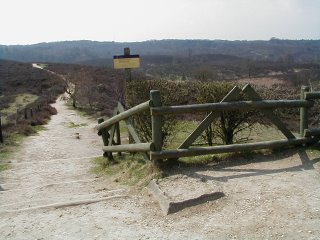
The boathouses were packed with people.
notes on being a primate on Earth

 The first full day in Holland we spent at Millingerwaard. This is a nature reserve near Nijmegen, centered around...you guessed it: rivers! Its a government/NGO arrangement, and the managers have succeeded in introducing large herbivores (mainly Konik horses) into the area. The office for the reserve is an ingenious design: organic-green-healthy restaurant/visitor center/butcher/deli. There are several ideas in the reserve: one is to sell bricks made from mud that is dredged out of the areas that are being reclaimed. Brick-making, in fact, is one of Holland's traditional crafts and exports, so this practice also fosters small community sustainability. Second, since there are no top predators in the food chain, the reserve has an excess of horse and cattle. The animals that die naturally they harvest and sell the meat. The visitor center is really nicely designed, and thoughtful, with wonderful ideas about sustainable business built in.
The first full day in Holland we spent at Millingerwaard. This is a nature reserve near Nijmegen, centered around...you guessed it: rivers! Its a government/NGO arrangement, and the managers have succeeded in introducing large herbivores (mainly Konik horses) into the area. The office for the reserve is an ingenious design: organic-green-healthy restaurant/visitor center/butcher/deli. There are several ideas in the reserve: one is to sell bricks made from mud that is dredged out of the areas that are being reclaimed. Brick-making, in fact, is one of Holland's traditional crafts and exports, so this practice also fosters small community sustainability. Second, since there are no top predators in the food chain, the reserve has an excess of horse and cattle. The animals that die naturally they harvest and sell the meat. The visitor center is really nicely designed, and thoughtful, with wonderful ideas about sustainable business built in.  We were received warmly there, on a cold morning with coffee and biscuits and a presentation by reserve managers. We took a walk around the reserve and saw the herbivores and the dikes that had been allowed to flood over. At the end of the day, several of us stayed behind to see if we could find the beavers that we'd been told were re-introduced to the wetlands. As we were walking back into the reserve, binoculars in hand, Nick called us over and Paul set his spotting scope trained to...a BEAVER! It was extremely exciting for everyone, especially the europeans and the brits in the group who had never seen a beaver (and especially not in Europe).
We were received warmly there, on a cold morning with coffee and biscuits and a presentation by reserve managers. We took a walk around the reserve and saw the herbivores and the dikes that had been allowed to flood over. At the end of the day, several of us stayed behind to see if we could find the beavers that we'd been told were re-introduced to the wetlands. As we were walking back into the reserve, binoculars in hand, Nick called us over and Paul set his spotting scope trained to...a BEAVER! It was extremely exciting for everyone, especially the europeans and the brits in the group who had never seen a beaver (and especially not in Europe). on the water as Martha always dreamed of, it did use the tail in a fascinating way. The tail sits like a rudder in the water, 90 degrees perpendicular to the water surface. It moves the tail side to side, like a fin, and this is how the beaver swims around. Its very smooth, and skilled: where we saw all of this was in somewhat shallow water, thick with reeds and branches to navigate.
on the water as Martha always dreamed of, it did use the tail in a fascinating way. The tail sits like a rudder in the water, 90 degrees perpendicular to the water surface. It moves the tail side to side, like a fin, and this is how the beaver swims around. Its very smooth, and skilled: where we saw all of this was in somewhat shallow water, thick with reeds and branches to navigate.